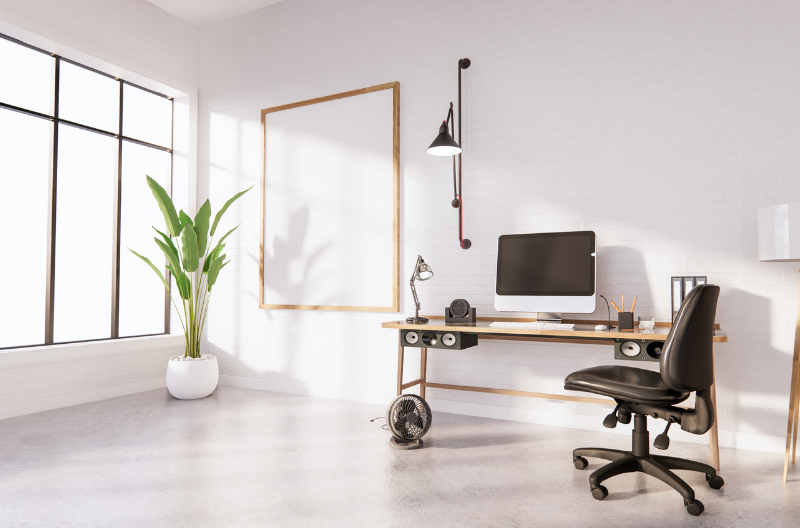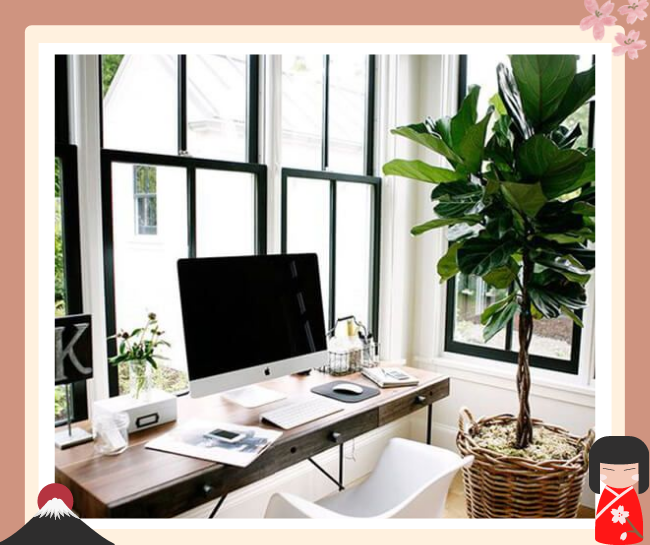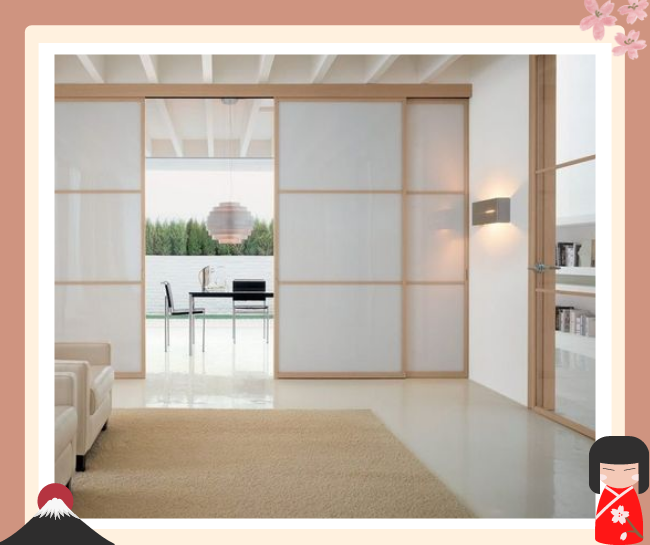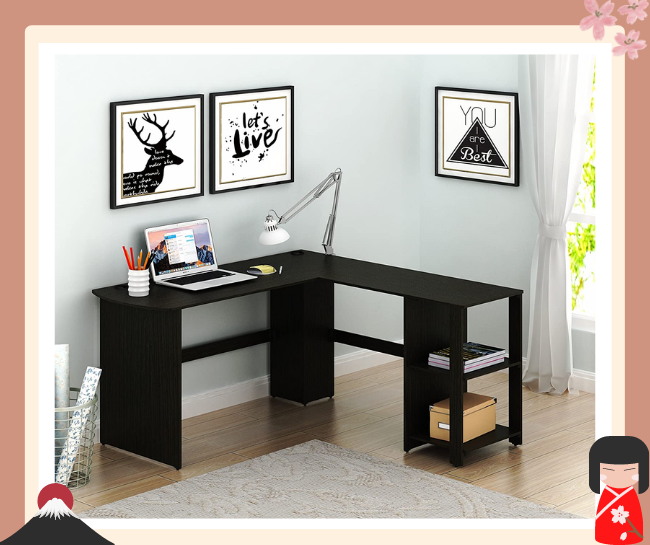Working from home has become the new “standard in today’s business.” Having a good place is essential for individuals lucky enough to enjoy the benefits of flexible working arrangements. For others, the dream of working from home does not always materialize, and the environment in which they work can be a defining element in their success.
It’s no accident that most multinational corporations spend a significant amount of money on workplace design, layout, and ergonomics.
👉🏻 It has been proven that well-designed workstations directly influence employee productivity, creativity, and overall satisfaction.
Also, keep in mind that happy employees equal happy balance sheets. It is something you should consider while designing your living place.
What is Japanese-inspired decor
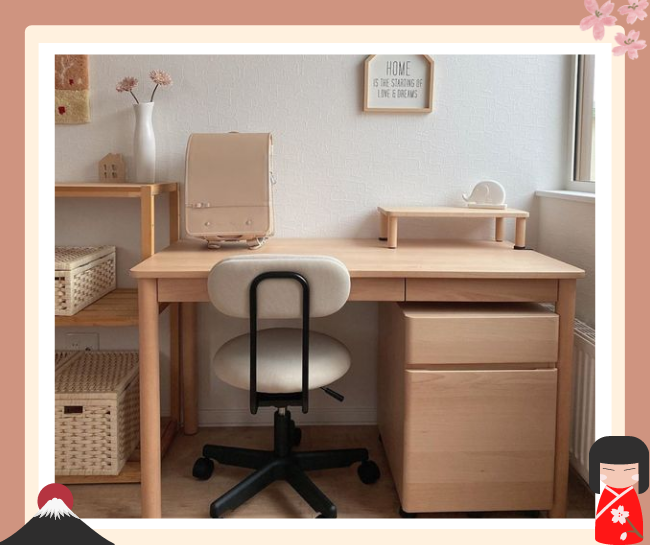
A Japanese-inspired decor is an ethnic minimalism style that entails refined color combinations and laconic shapes combined with exceptional design ideas. The profusion of natural materials and floral arrangements identifies this design trend (ikebanas). It will appeal to individuals who want a clean, well-organized area with minimum furnishings.
How do I Zen my home office
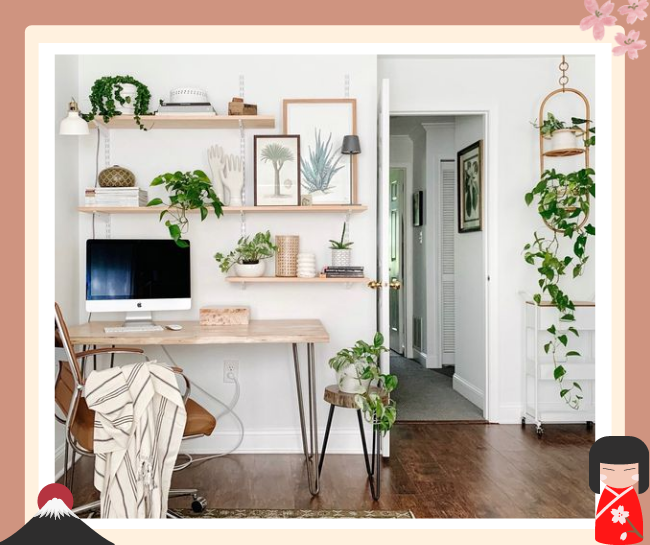
If you work from home, you should be well aware of the difficulties of managing your professional and personal lives under one roof. Here are some tips for making your Japanese home office more serene and productive.
- Consider using natural lighting as a concept
Unintentionally, people always place their laptops against a wall in the darkest area of the room. It will make them feel like they are in a cubicle, but it will also increase their lighting costs. Natural lighting is an essential aesthetic in Japanese design, but there are some dos and don’ts to keep in mind.
You’ll need to build large, broad windows to let in more light. It would help if you avoided drapes that are heavy and bulky in appearance. The former compliments the Japanese aesthetic, while the latter does not. You might use simple bamboo blinds or sheer drapes instead.
- Use wood and bamboo in your home office
You will need a one-time investment design for your Japanese home office ideas, and what could be better than wood? The first element, wood, symbolizes leadership, development, vigor, and rejuvenation. In a nutshell, the things you’d like to implement into your professional life. Bamboo, for example, has a high tensile strength and a naturally appealing color and finish. It is no longer necessary to have it painted or polished.
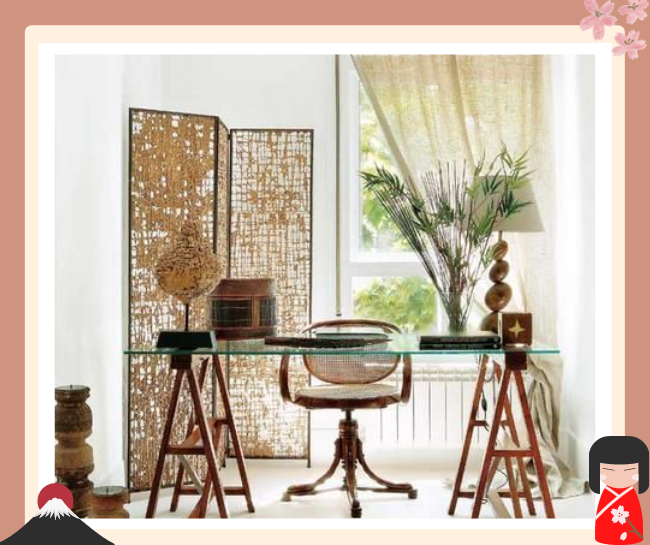
There’s also a widespread belief that bamboo is inferior to wood. It is a pure fabrication. Bamboo is earthquake and fire-resistant, although wood is not. You may choose from timber floors, screen grids, or even a wall for your home office design. Moreover, wood or bamboo is easy to maintain and adds a trendy, high-end appeal to your home office. Then, there’s the extra benefit of long-term use.
- Select your office color scheme carefully
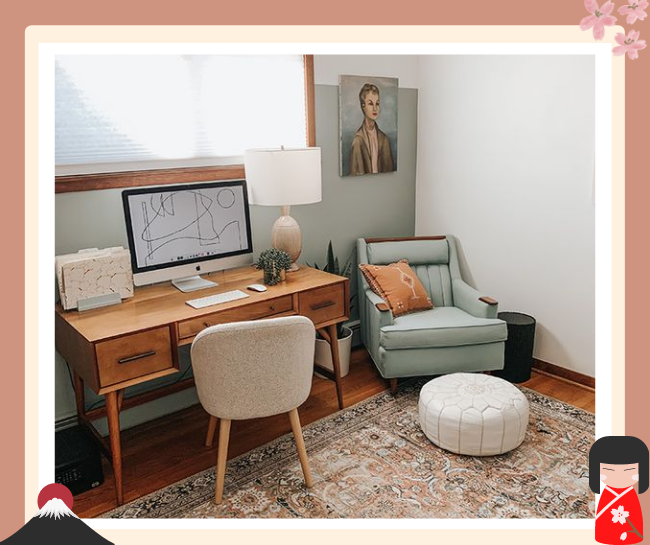
In your Japanese home office ideas, color therapy may assist in creating a happy atmosphere. The color pallet in Japanese design is usually neutral with earthy tones. Shades of grey, brown, beige, and other neutrals come to mind. The reason for this is that the Japanese consider themselves in tune with nature’s beauty. Take a glimpse out of your windows to see what colors you might include in your working environment to get more ideas.
- Keep your home office green with natural plants
Green is a color that represents money and progress. It also aids in reducing stress and the enhancement of happiness and productivity. It also complements the Japanese home office ideas you’re incorporating into your life.
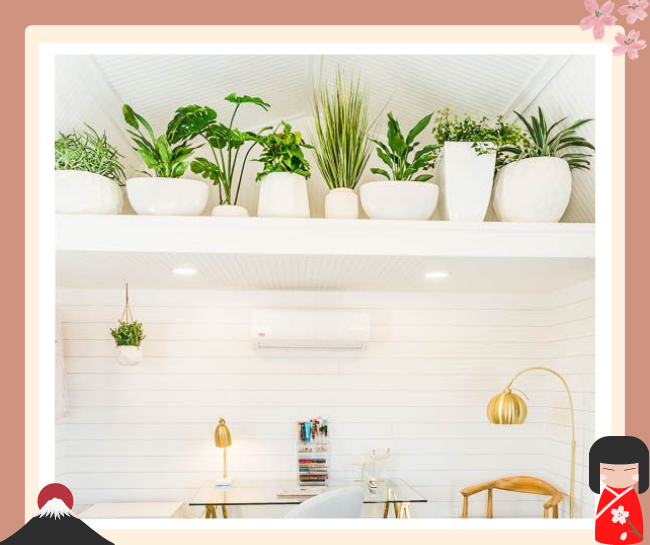
You can place natural houseplants throughout your office to add a splash of color and greenery. Plants like the Boston fern and the spider plant, which help to improve air quality and are easy to maintain, should be included.
- Install screens and sliding doors instead of regular doors
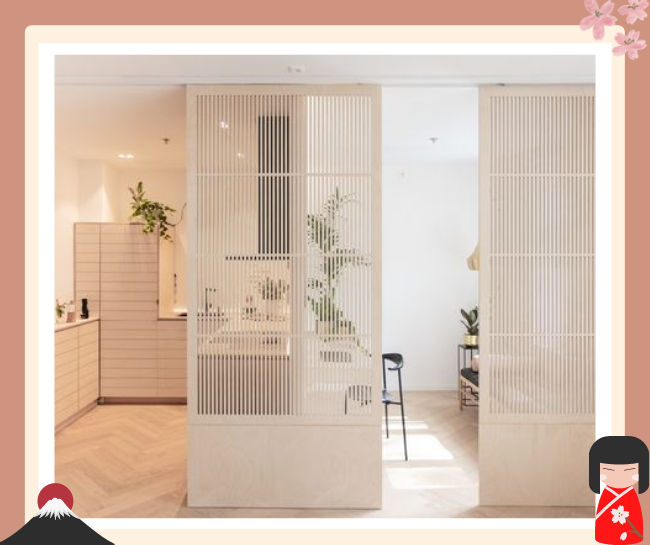
People are highly likely to name Shoji as the first thing that springs to mind when they think about Japanese interior design.
💡 The Japanese believe in making the most of every available area.
The Shoji’s sliding action saves space that a typical door would typically take up, which is especially handy if your home office is on the smaller side. Furthermore, natural light is not hindered because they are generally constructed of opaque paper.
- Choose multipurpose Japanese home office furniture
Choosing workplace furniture is difficult enough, but adding the term “home” makes it much more difficult.
💡 To save space and money, it’s always better to choose versatile office furniture.
The Japanese interior design style is characterized by low-to-the-ground furniture, mostly comprised of floor cushions. It is a beautiful trick if your home office area also has lower ceilings. It’s entirely up to you whether you want to use purely actual Japanese-style furniture or blend in some contemporary pieces. The beauty of Japanese-style furniture is that it blends in well with different styles, keeping your home office looking neat and tidy.
- Make your Zen corner for meditating
A calm aesthetic is essential in Japanese design. You’ll need to set aside some time for meditation because you’re decorating your home office in Japanese style. It will not only provide you with your zen area to rest in, but it will also provide you with a space to help you think clearly and make informed decisions.
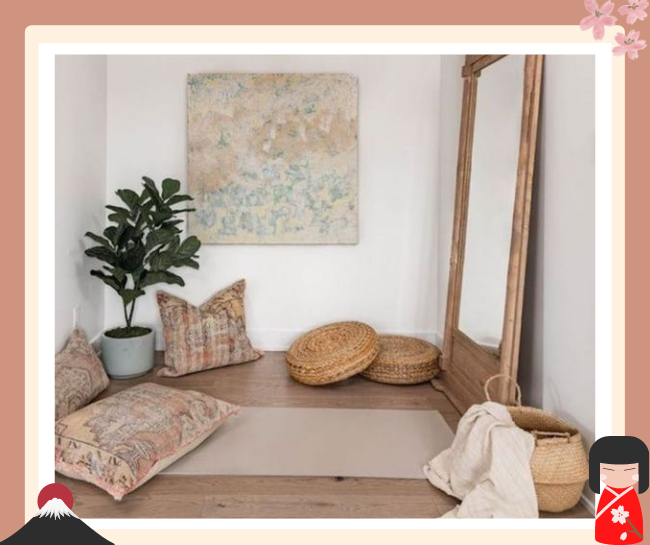
Place soft floor cushions in any area of your home office, along with a water feature that will assist in drowning out other noises with its trickling sound. Remember to surround your spot with plenty of plants and an extension to play soothing music. Keeping all of these tips in mind will assist you in creating a home office with a wealthy Japanese style that is minimalist, simple, and impactful. Your workspace will then transform into a cozy yet productive location where you do your tasks.
Get your home office ideas basement by clicking this link!
We would love to hear your thoughts! Share it in the comment section below 😇

